
Pixalate recently released the Q1 2023 Abandoned Mobile Apps Report, analyzing apps from the Google Play Store and Apple App Store that have been “abandoned.” An app is considered abandoned if it has not been updated in at least two years.
We thought it would be beneficial to highlight some of the most interesting findings.
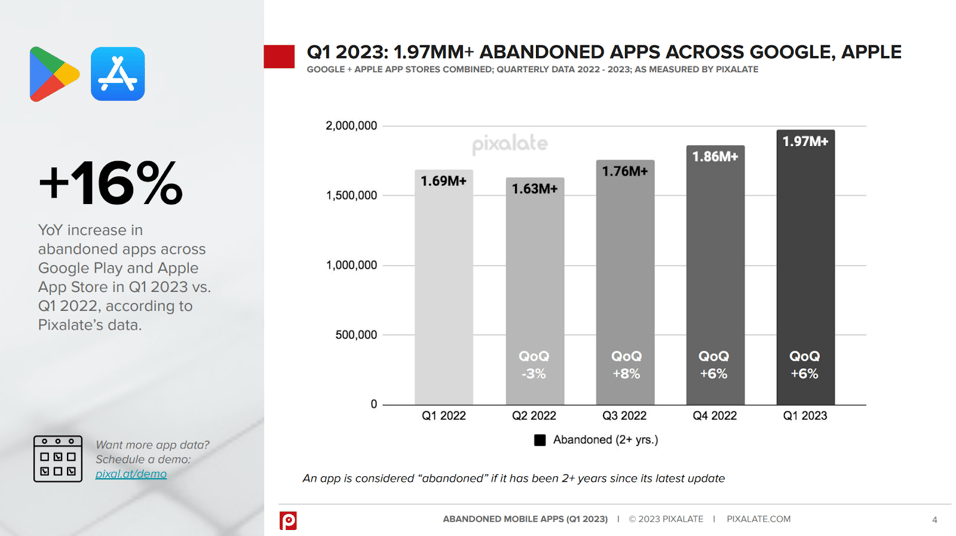
Number of abandoned mobile apps QoQ between Q1 2022 and Q1 2023; as measured by Pixalate:
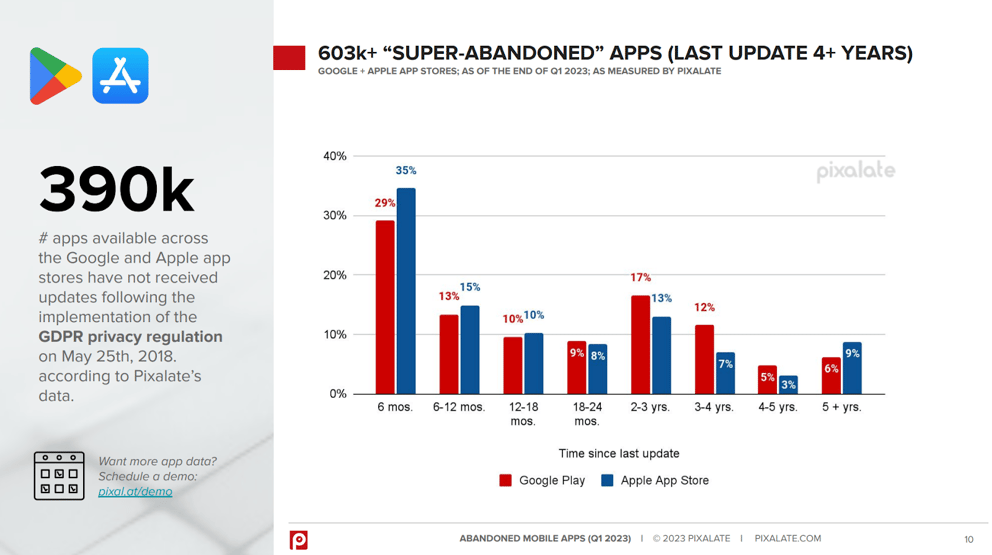
Length of time since last update across the last 5 years; as measured by Pixalate:
6 Months
6 - 12 Months
12 - 18 Months
18 - 24 Months
2 - 3 Years
3 - 4 Years
4 - 5 Years
5+ Years
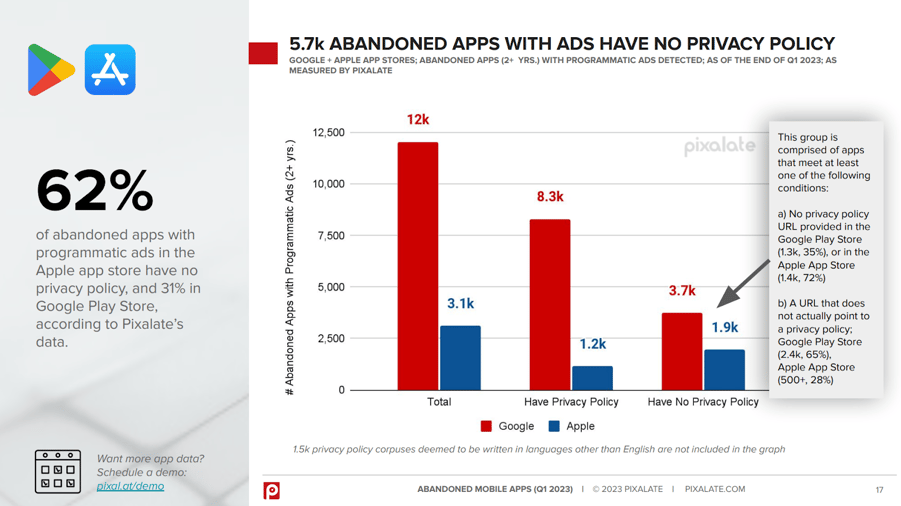
Estimated number of abandoned apps with programmatic ads, as measured by Pixalate, that have no privacy policy detected; Q1 2023:
Total
Has Privacy Policy
Has No Privacy Policy
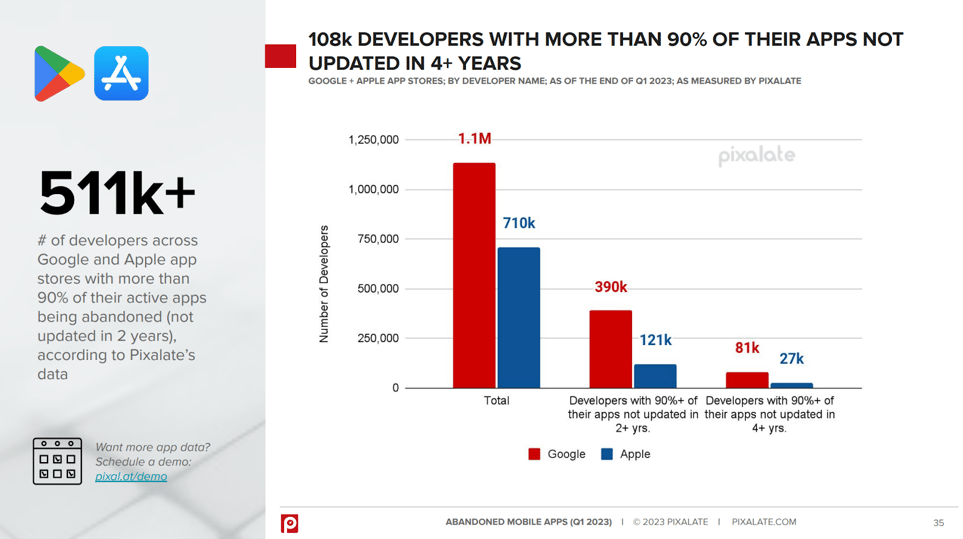
Estimated number of developers with abandoned apps not updated; as measured by Pixalate:
Total
Developers with 90%+ of their apps not updated in 2+ years
Developers with 90%+ of their apps not updated in 4+ years
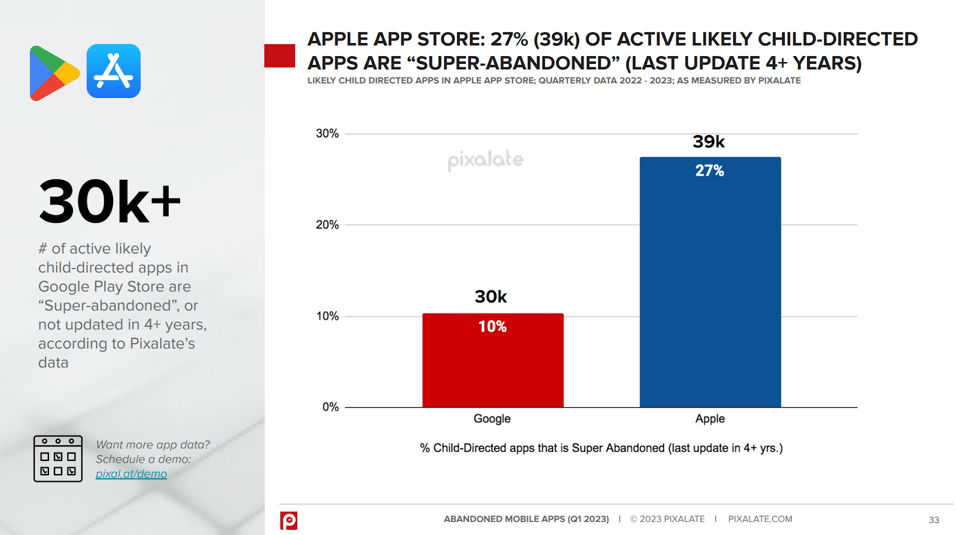
Estimated number of child-directed apps that are ‘super-abandoned’; as measured by Pixalate:
For more Q1 2023 Abandoned Mobile Apps analysis, download a free copy of the report here:
If you are interested in more insights like the above, across desktop, mobile and CTV devices, please reach out to us using this contact form.
Disclaimer
The content of this press release, and the Abandoned Mobile Apps Report: Q1 2023 (the "Report"), reflect Pixalate's opinions with respect to factors that Pixalate believes can be useful to the digital media industry. Pixalate’s opinions are just that, opinions, which means that they are neither facts nor guarantees. Pixalate is sharing this data not to impugn the standing or reputation of any entity, person or app, but, instead, to report findings and trends pertaining to programmatic advertising activity across mobile apps in the time period studied.
*By entering your email address and clicking Subscribe, you are agreeing to our Terms of Use and Privacy Policy.
These Stories on Mobile Apps
*By entering your email address and clicking Subscribe, you are agreeing to our Terms of Use and Privacy Policy.

Disclaimer: The content of this page reflects Pixalate’s opinions with respect to the factors that Pixalate believes can be useful to the digital media industry. Any proprietary data shared is grounded in Pixalate’s proprietary technology and analytics, which Pixalate is continuously evaluating and updating. Any references to outside sources should not be construed as endorsements. Pixalate’s opinions are just that - opinion, not facts or guarantees.
Per the MRC, “'Fraud' is not intended to represent fraud as defined in various laws, statutes and ordinances or as conventionally used in U.S. Court or other legal proceedings, but rather a custom definition strictly for advertising measurement purposes. Also per the MRC, “‘Invalid Traffic’ is defined generally as traffic that does not meet certain ad serving quality or completeness criteria, or otherwise does not represent legitimate ad traffic that should be included in measurement counts. Among the reasons why ad traffic may be deemed invalid is it is a result of non-human traffic (spiders, bots, etc.), or activity designed to produce fraudulent traffic.”

